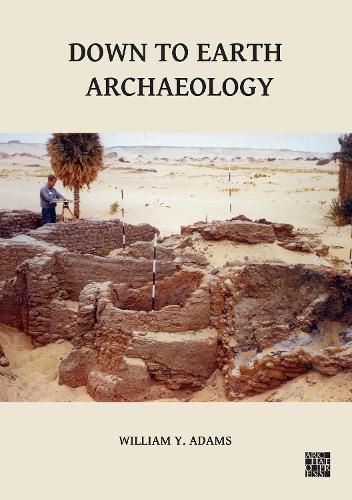Readings Newsletter
Become a Readings Member to make your shopping experience even easier.
Sign in or sign up for free!
You’re not far away from qualifying for FREE standard shipping within Australia
You’ve qualified for FREE standard shipping within Australia
The cart is loading…






Down to Earth Archaeology collects sixteen archaeological papers by Professor William Y. Adams chosen by the author, who added introductory commentary to each. These articles were written at various times during his lengthy and productive academic career for different purposes and for different audiences. Most of those selected had been previously published only in a limited way, either as conference proceedings or contributions to various Festschriften, and as such he wanted to enable them to reach a wider readership than they had originally. He described this collection as his ‘dernieres pensees’.
The essays encompass a wide range of topics, from reflections upon the successes, failures and lessons learned from the UNESCO International Campaign to Save the Monuments of Nubia in the 1960s, in which Bill was very much a leading figure and which he was uniquely positioned to critique, to discussions and criticisms of the theoretical framework of ‘New’ or ‘Processual Archaeology’ and its application of ‘scientific’ methods. Other papers included here are seminal works discussing the ideological concepts of typology and classification and their practical application to archaeological excavations, notably his own major excavations conducted at the large Nubian cityscapes of Meinarti, Kulubnarti and Qasr Ibrim, and the ceramic kilns at Faras.
$9.00 standard shipping within Australia
FREE standard shipping within Australia for orders over $100.00
Express & International shipping calculated at checkout
Down to Earth Archaeology collects sixteen archaeological papers by Professor William Y. Adams chosen by the author, who added introductory commentary to each. These articles were written at various times during his lengthy and productive academic career for different purposes and for different audiences. Most of those selected had been previously published only in a limited way, either as conference proceedings or contributions to various Festschriften, and as such he wanted to enable them to reach a wider readership than they had originally. He described this collection as his ‘dernieres pensees’.
The essays encompass a wide range of topics, from reflections upon the successes, failures and lessons learned from the UNESCO International Campaign to Save the Monuments of Nubia in the 1960s, in which Bill was very much a leading figure and which he was uniquely positioned to critique, to discussions and criticisms of the theoretical framework of ‘New’ or ‘Processual Archaeology’ and its application of ‘scientific’ methods. Other papers included here are seminal works discussing the ideological concepts of typology and classification and their practical application to archaeological excavations, notably his own major excavations conducted at the large Nubian cityscapes of Meinarti, Kulubnarti and Qasr Ibrim, and the ceramic kilns at Faras.